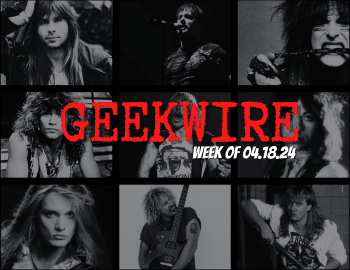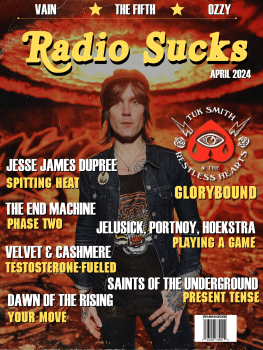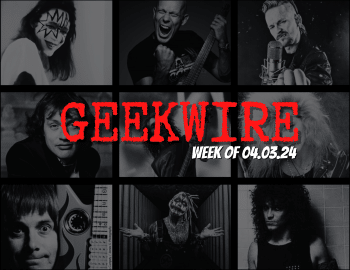

Kris Derrig was born in Massachusetts on April 6, 1954, the youngest of three boys (brothers Dale and Tim are older). According to Dale, Kris was an old soul, soft-spoken, even shy. An innately gifted tinkerer/refurbisher/builder, Kris would obsess about his latest masterpiece (sometimes cars, sometimes guitars) with an intensity that would cause him to lose sight of everything else, including eating and sleeping.
Duane Allman’s guitar playing resonated with Kris Derrig at a young age. It motivated him to pick up the guitar. As he tended to do, he practiced obsessively until he could play whole Allman Brothers albums, note-for-note. He played with a few bands, Rockbound Coast and Synergy to name a couple. He attended the Berklee School of Music, where the faculty did not view rock ‘n roll, much less southern fried rock ‘n roll, as a serious art form. But Kris’s bluesy southern playing eventually grew on the faculty and they allowed him to graduate. In effect, the faculty conceded that maybe, just maybe, southern rock had its place and Kris deserved a diploma for playing it to perfection.

Dale’s kid brother never bothered with long term plans and never had much use for money, except to the extent that it allowed him to finance his next masterpiece. He spent some time in Atlanta to be closer to the roots of southern rock. To Kris, the Allman Brothers were something akin to a deity, and his devotion would sometimes lead him to the gravesite of Elizabeth Reed where he would sit and play songs for her on his guitar. He took up hairdressing, and of course, started to become somewhat of a sensation. He was also starting to make a name for himself as a top-notch guitar refinisher and builder. But it was the 1980’s and the epicenter of the guitar world had shifted to Southern California. So, off he went…
At that time, the rock guitar fraternity, for better or worse (depending on your perspective), was predominantly a collection of superstrat thrill dealers – i.e., Warren DeMartini (RATT), George Lynch (Dokken), Bruce Kulick (KISS), Vivian Campbell (DIO, Whitesnake), Jake E. Lee (Ozzy). Regardless of the manufacturer (Jackson, Charvel, and Ibanez to name a few), the superstrat was small and agile with tons of frets and designed to be played faster and flashier than its predecessors. The old school blues-based guitar foundation played on old school guitar platforms like the Gibson Les Paul had fallen out of favor, compliments of Eddie Van Halen.

Kris Derrig and Slash, each, could not have been more out of step with the superstrat craze. To Slash’s knowledge, he never actually met Kris Derrig. But in retrospect, it’s not a surprise that their legacies are intertwined. Simply put, they were both old school. To them, guitarists weren’t supposed to sound like Yngwie Malmsteen. Guitarists were supposed to sound like Joe Perry and Duane Allman. Guitarists weren’t supposed to bury you under a hailstorm of notes. Guitarists were supposed to connect with your soul; to give voice to those things that are sometimes hard to articulate with the spoken word. Admit it, two notes into “Welcome To The Jungle” or “Sweet Child O’ Mine”, you feel something. It’s ok, you can admit it because you can also take solace in the fact that there’s lots of us who feel the same way. There’s a bunch of reasons Appetite For Destruction has sold about 18 million copies, and for many, Slash and his guitar are chief among them.
It was the 1980’s, and the guitar universe was out of balance. We were awash in superstrats and other streamlined whammy bar guitars. As Dale recalls, Kris thought superstrats lacked the warm, soulful tonal qualities of the Les Paul. Not to mention, Kris’s oversized hands did not pair well with the super thin shredder necks of that era. At the same time, Slash was famously ignoring (read: actively avoiding) the rest of the Sunset Strip bands and their million-note guitarists. Steven Adler would invite Slash to go watch the latest, hottest group on the Strip. Slash never went. He couldn’t stand the sound of it. Although there were some diamonds in the Sunset Strip rough, to Kris Derrig and Slash, that movement was largely soulless; a passing fad.

In late 1986, Guns N’ Roses were recording Appetite For Destruction. Slash wrote in his book, “I sold my equipment for cash to score more smack.” As a result, for the early sessions, Slash had to suffer various B.C. Rich, Jacksons, and a borrowed Gibson SG. According to Slash, they all sounded “horrible.”
Guns manager Alan Niven realized there was a slight problem when he pulled up at Take One Studios in Burbank where Slash was recording his parts. In a 2016 interview for LA Weekly, Niven recalled seeing the ass end of a Gibson SG hanging out the windshield of the Guns rental van. The SG and the windshield had fallen victim to Slash’s frustration with being unable to properly convey his essence onto tape with these various other guitars. In a fit of rage, Slash smashed the SG through the windshield, neck-first. As Slash recounts in his book, he was so desperate that he called and asked Paul Stanley for a guitar. However, Paul Stanley, who wanted to produce Appetite For Destruction, was still pissed off at the Guns guys for the irreverent way they had turned him down and declined (to put it politely).
Realizing the gravity of the situation, Niven stopped by Music Works on Artesia Blvd. and spoke to the owner, Jim Foote, about the problem. Foote, the West Coast’s guru of vintage instruments, suggested the now famous Kris Derrig ’59 Les Paul replica.

At this time, Kris Derrig was living in a trailer he parked behind Music Works, doing some refinishing and also crafting his replicas. He had applied for a job as a refinisher and luthier by producing one of his beautiful replicas as a resume. Needless to say, he got the job. His Les Pauls brought in about $1,500.00 each. He was using the profits to finance his next masterpiece, a 1967 Pontiac Tempest that he was converting into a GTO. For me and for those readers who aren’t “car geeks” (Dale’s words, not mine), Dale tried to explain to me the enormity of such an endeavor. In short, the sheer level of granular detail required to transform a car into another car is mind boggling, and yet, this was just the kind of technical challenge Kris Derrig lived for.
Nevin took the Derrig to Slash. Instantly, Appetite producer, Mike Clink, knew the Derrig and Slash were meant for each other. Slash knew it, too. From that point forward, Slash’s now iconic thick, milky, aggressive sound oozed onto the tape and became a major ingredient of the Appetite For Destruction recipe. Perfect pairings don’t come along often. When they do, they’re special. Cheech and Chong. Kim and Kanye. Bacon and anything. Slash and his Derrig definitely qualify. Two-handed tapping, whammy bar dive bombs, and sweep-picked warp speed arpeggios had no place on Appetite For Destruction. The guitar work is soulful, groove-laden, sometimes angry, sometimes sentimental, but never self-indulgent. Grover Jackson and his products are awesome. And some of the players who play them are among the all-time greats. But Slash is a different kind of player. And Kris Derrig was a different kind of luthier. Not better… just different. Recollections vary as to how much the Derrig appears on Appetite. But the consensus seems to be that, at the very least, the majority of Slash’s solos feature the Derrig. Together, Kris Derrig and Slash helped restore some balance to the guitar universe. I don’t have the Gibson sales figures from that era, but I bet Slash and his Derrig helped a little…maybe a lot.

Sadly, Kris Derrig fell ill in 1986 and was diagnosed with cancer. He returned to the East Coast to be with family and to seek medical treatment. Kris briefly achieved remission, but cancer being the sinister motherfucker that it is, he was soon gone. Dale traveled to California to gather Kris’s things, including his beloved Pontiac. When he arrived, all of Kris’s things were neatly in the Pontiac. Nobody really wanted to touch anything. To those who knew him, Kris’s things were sacred. Dale took the Pontiac back home. He held onto it for a while but eventually sold it. Kris was buried at the family plot in Dexter, Maine. According to Dale, Kris’s headstone is non-descript and not befitting his legacy. It should have, at the very least, been etched with a guitar. But finances were limited and Kris left some hefty medical bills. Just me thinking out loud, but isn’t a legendary luthier’s headstone the exact sort of thing GoFundMe is designed to address?
To label a Derrig ’59 Les Paul a “replica” is a bit of a stretch. Highly customized, the Derrig replicas were modern vintage in the most complimentary sense of the phrase. Dimensional and other visual differences abound between the Gibson ’59 and the Derrig replicas. After all, Kris wasn’t trying to create a perfect facsimile of the ’59 Lester. Kris had a flair for taking the classic Les Paul platform and marrying it with modern playability and his breathtaking aesthetics.
To many an aficionado, Kris Derrig’s flame-tops were more jaw-droppingly, beautifully flamey than Gibson ever made. According to Jim Foote, the reason people are so taken aback by the radiant beauty of the Derrig replicas is because Kris had no equal when it came to working with “old school aniline dyes.” As he posted on an online guitar forum, luthier Barry Haugen, who worked with Kris at Atlanta Guitar Works, may have a different explanation – perhaps the prototypical Derrig eye-popping radiance can be traced back to Kris’s idea of heating his lacquer on a hot plate to thin it. That way, he could spray it on without any solvent, for a high gloss effect. Please don’t try this at home folks!!! It’s a miracle Kris didn’t set himself on fire. But to Kris, that’s what it took to create a masterpiece. Moreover, Dale recalls helping Kris scour the Earth for the oldest, densest maple he could find for the tops. Dale watched as Kris would inspect the wood and test it by spitting on it (generally, Kris wanted it to be over 100-years old). Most likely, all of these factors contributed to the beauty of Kris’s creations.
Kris left his fingerprints all over the inside and outside of his works, literally and figuratively. Close scrutiny reveals distinctive routing and pickup cavities, different than the original Gibson design (it makes the neck appear to be set deeper into the body, but it actually isn’t). Leave a post if you know more about the Derrig specs and want to share.

Slash’s version was outfitted with Seymour Duncan Alnico II Zebra pickups to give it a classic, but hot-rodded, sound. It also has a thinner neck for better speed, accuracy, and overall playability. Once again, people in the know, including Slash and Barry Haugen, largely agree that the Derrigs sounded better than the product Gibson was pumping out at that time. In 2010, during the taping of the Max Sessions in Australia, when Slash and Myles Kennedy played their famous all acoustic set (if you haven’t already, check it out on Youtube), a fan asked Slash which of his guitars was his favorite. Slash answered unequivocally that, amongst his 100 or so specimens, his original Derrig is the finest instrument he owns and it remains his main studio guitar.
Dale estimates that Kris made about 20, but maybe a few more, of his guitar masterpieces. Word has it that Slash later acquired one more and now owns two (he stores the original Appetite guitar in a safe). Lenny Kravitz owns one. Charlie Daniels owns one. Some may be forever lost as they were passed off as authentic Gibsons, and thus, their owners may not even know their guitar’s true identity. If you suspect it, have yours scrutinized by someone with intimate knowledge of Kris Derrig’s work. There are people around who really know their Derrigs. If you’re lucky enough to own one, please share a picture.
A few years ago, in a stunning role reversal, Gibson released a replica of Slash’s Derrig replica. They called it the Appetite For Destruction Les Paul and charged around $5,000.00 for them. The irony isn’t lost on Dale; he recalls a conversation he had with Kris back in the Atlanta days. Kris was a little freaked out because he received word that Gibson had taken notice of some high quality “counterfeits” floating around the South. One of Kris’s early expressions had found its way into the Gibson headquarters in Tennessee. Needless to say, Gibson wasn’t thrilled. The fact that Gibson is now “counterfeiting” Kris’s guitars is priceless. If only he were here to see it.
So, on May 14, 2017, celebrate the life of Kris Derrig by giving your old Appetite For Destruction CD a spin and listen – I mean really listen – to the guitar sound. There’s a bit of Kris Derrig in it.
*If you knew Kris, please share a memory for the rest of us who never had the pleasure*
By Jerry Lee Lucifer
[embedyt] https://www.youtube.com/watch?v=o1tj2zJ2Wvg[/embedyt]





6 thoughts on “30 YEARS LATER – A LOOK BACK AT THE LIFE OF LEGENDARY LUTHIER, KRIS DERRIG”
Great tribute article. One little correction: the guitar in the videos for Jungle and Sweet Child is NOT the same ax. That guitar is the Max LP, made by Peter “Max” Baranet. The similarity (and insanity of that era) has led to some confusion but it is definitely the Max in the videos and my uncle’s guitar in the AFD sessions
Thank-you for writing this excellent tribute to Kris. He is (was) my cousin. We loved it when Kris would come visit in his teens and college years always guitar in hand. His grand mother was a concert pianist and he apparently inherited her talent. He also had an ear for sound that seemed supernatural. He would complain to our grand parents that he could hear the radio from the box spring of my grandparents antique bed. We lived in Vermont and he often sourced his guitar wood from Vermont apparently for better sound quality. My brother Doug, a Dr. with lung expertise tried to help diagnose and treat the cancer in the late stages. Doug was pretty confident that the cancer was caused by the exposure to old-school laquers that Kris was using with inadequate ventillation. So, it is very likey that what made Kris infamous also caused his death. It is nice to know Kris will be remembered for his guitar design and building talent for a very long time.
Must be great pride for his family to know that one of his creations has become one of the most iconic guitars in rock and roll history, to the point that even Gibson have even honored it.
Doe’s anyone know if he ever built a 61 sg style les paul?
Great tribute article.very enlightening. Thank you for writing it.
My brother knew him well the nicest guy i have ever met in my life
Comments are closed.